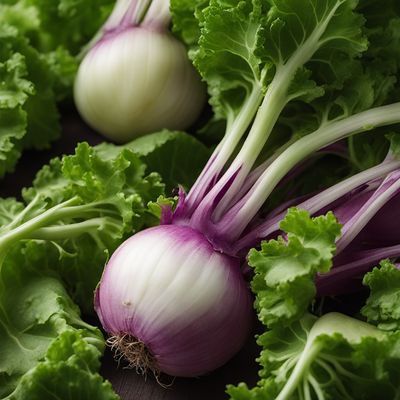
Ingredient
Rapeseeds and similar-
The Mighty Rapeseed: A Nutrient-Rich Powerhouse for Culinary Delights
Rapeseeds, also known as canola seeds, are small, round seeds that come from the Brassica napus plant. They have a smooth texture and a mild, nutty flavor. These seeds are typically dark brown or black in color and are often used to extract oil. Rapeseeds are rich in healthy fats, protein, and fiber, making them a nutritious addition to meals. They can be used in both sweet and savory dishes, adding a delightful crunch and a subtle nutty taste.
Origins and history
Rapeseeds have a long history and are believed to have originated in Asia, particularly in the Mediterranean region. They have been cultivated for thousands of years and were initially used for their oil. Over time, rapeseeds gained popularity in Europe and North America, where they were selectively bred to reduce their erucic acid content and improve their taste. Today, rapeseeds are widely grown in countries like Canada, China, India, and Germany.
Nutritional information
Rapeseeds are packed with nutrients, including healthy fats, protein, fiber, and essential minerals such as magnesium and phosphorus. They are also a good source of omega-3 fatty acids and vitamin E.
Allergens
Rapeseeds may cause allergic reactions in individuals with a known allergy to mustard or other Brassica family plants.
How to select
When selecting rapeseeds, look for seeds that are plump, shiny, and free from any signs of moisture or mold. Avoid seeds that appear discolored or have a rancid smell. Opt for organic or non-GMO varieties whenever possible.
Storage recommendations
To maintain the freshness and quality of rapeseeds, store them in an airtight container in a cool, dark pantry or refrigerator. This will help prevent the seeds from becoming rancid and extend their shelf life.
How to produce
Rapeseeds can be grown by amateur gardeners in temperate climates. They require well-drained soil, full sun exposure, and regular watering. Sow the seeds directly in the garden or in containers, ensuring a spacing of about 6 inches between each seed. Harvest the mature seeds when the pods turn brown and dry. Thresh the pods to separate the seeds and store them in a cool, dry place.
Preparation tips
Rapeseeds can be used in various ways. They can be toasted and sprinkled over salads, roasted vegetables, or added to granola for a crunchy texture. Rapeseed oil, extracted from the seeds, is excellent for sautéing, baking, and dressing. It has a high smoke point and a neutral flavor, making it a versatile cooking oil. When using rapeseeds, it's important to note that they have a natural bitterness, which can be reduced by toasting or roasting them before use.
Culinary uses
Rapeseeds and rapeseed oil are commonly used in salad dressings, marinades, and baked goods. They can also be used as a topping for yogurt, smoothies, or oatmeal. In some cuisines, rapeseeds are ground into a paste and used as a condiment or flavoring agent.
Availability
Rapeseeds are commonly available in regions where they are cultivated, such as Canada, China, India, and Germany.

